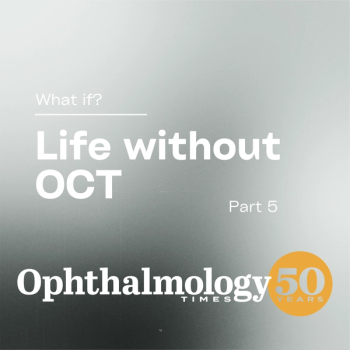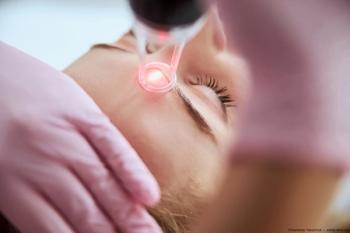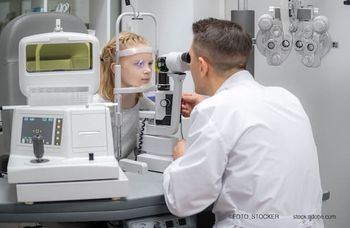
Emerging technology aids diabetic retinopathy screening
Ophthalmologists should take a proactive approach toward the screening, management, and early treatment of diabetic retinopathy.
Key Points
Editor's Note: Part one of Ophthalmology Times' in-depth look at diabetic retinopathy, here, examines screening techniques and technologies. Part two, coming in the Oct. 1, 2009, issue, will explore management, follow-up, and research into pharmaceutical approaches to treatment.
The American Diabetes Association estimates that 17.9 million Americans have diagnosed diabetes, and approximately 5.7 million more have the disease but it is undiagnosed.1
Prolonged hyperglycemia, hypoglycemia, and dyslipidemia in patients with diabetes can lead to oxidative stress, inflammation, and vascular damage causing microvascular complications that severely impair a patient's quality of life. One such microvascular complication is diabetic retinopathy (DR), which is responsible for 12,000 to 24,000 new cases of blindness in the United States each year and is the leading cause of blindness among U.S. adults aged 20 to 74 years. Coinciding with the rise of diabetes in the United States, it is estimated that the number of Americans aged 40 or more years who have DR will triple from 5.5 million in 2005 to 16.0 million in 2050.2
Although late-stage DR notoriously is difficult to treat (currently no FDA-approved pharmacologic therapies are available), early detection and proper management can effectively reduce vision loss. Studies have shown that early neural changes occur well before any subjective change in vision perception or in visual acuity (VA) happens.3–5 Neural and vascular abnormalities can occur remarkably early in the disease. A study of adolescents aged 13 to 21 years who had type 2 diabetes and a mean disease duration of 2.1 years found significantly delayed multifocal electroretinogram (mfERG) responses, retinal thinning, and significant venular dilation compared with age-matched controls. The underlying neural and vascular pathology progresses over time, leaving central VA relatively spared until the advanced stage of the disease, when serious complications are present and considerable risk for blindness exists. Thus, it comes as no surprise that despite advancements in insulin therapy and the use of panretinal photocoagulation, the prevalence of blindness due to DR has remained relatively unchanged in the United States.6
The possibility that late-stage DR could be prevented in the majority of patients cannot be overlooked. Once the disease has progressed to a late stage, treatments often fail, making it a priority that ophthalmologists take a proactive approach toward the management, screening, and early treatment of DR.
The first step in reducing potential loss of visual function is to identify patients at risk through proper screening for diabetes. Although screening for incipient diabetes mellitus is more difficult than screening for clinically manifested disease using blood glucose levels, it is important for at-risk patients, including those who are overweight or have a family history of the disease. At-risk patients should be thoroughly screened by their primary care physicians to manage the disease before any complications develop.
In the past few years, new emphasis has been placed on screening for DR in all patients with diabetes. Because VA can remain stable even if DR develops outside the foveal region, patients with diabetes always should undergo thorough ophthalmic evaluation, including dilated fundus examination. Early and accurate screening is the best tool at preventing severe vision loss, and several techniques-direct and indirect ophthalmoscopy, mydriatic or nonmydriatic fundus photography, stereo fundus photography, and, in advanced cases, fluorescein angiography-are available to detect and classify DR.7
Ophthalmoscopy is the most commonly used technique to screen for DR. Undilated ophthalmoscopy, however, has poor sensitivity relative to the other methods, including the one considered to be the "gold standard" (but less widely available): seven-field stereoscopic color fundus photography.7
Fundus examination can be used to identify one of several signs of non-proliferative DR (NPDR) and the loss of pericytes from retinal vessels, a key trigger of microvascular complications.8 Early indicators of DR include various types of retinal lesions, such as microaneurysms, intra-retinal hemorrhages, and decompensated capillaries. The occurrence of intraretinal microvascular abnormalities (IRMAs)-which result from endothelial cell proliferation within vessels, causing holes in these vessels-can provide an accurate gauge of NPDR severity. Numerous IRMAs are present in severe NPDR and are good predictors of future proliferative DR (PDR), because neovascularization often occurs in areas of preexisting IRMAs. Further, abnormalities of retinal veins-such as venous dilation, venous beading, and the formation of venous loops-are signs of retinal hypoxia and elevated risk of PDR.
Unfortunately, even though a skilled practitioner can recognize the early signs of NPDR, DR screening often is delayed until beyond when effective proactive strategies can be adopted, even in patients with diagnosed diabetes. For example, a study in São Paolo, Brazil, found that the mean interval between diagnosis and the first ophthalmic examination was 13 years for those with type I diabetes and 5 years for those with type 2 diabetes, even though severe retinopathy occurred as early as 3 months after the diagnosis of diabetes.9
Large-scale screening efforts for DR have produced positive effects on patient quality of life. Research also has shown that intensive community-based prevention programs aimed at improving eye care can provide more cost-effective care than less-intensive programs that require higher levels of treatment.10 A campaign focusing on screening using a nonmydriatic fundus camera in the Rhine area of France led to a significant benefit in public health and a reduction of diabetic complications.11 Likewise, screening efforts in the community of Laxa, Sweden, that have been ongoing since 1983 have produced positive results. Out of the entire diabetic population of Laxa, only one person was blind due to diabetes.12
Newsletter
Don’t miss out—get Ophthalmology Times updates on the latest clinical advancements and expert interviews, straight to your inbox.




















































.png)


